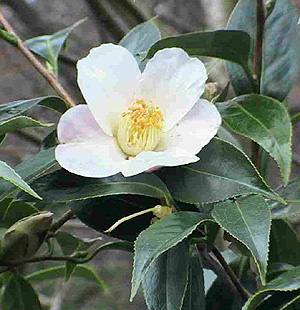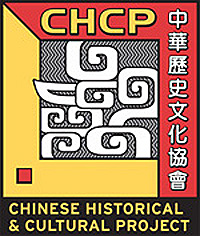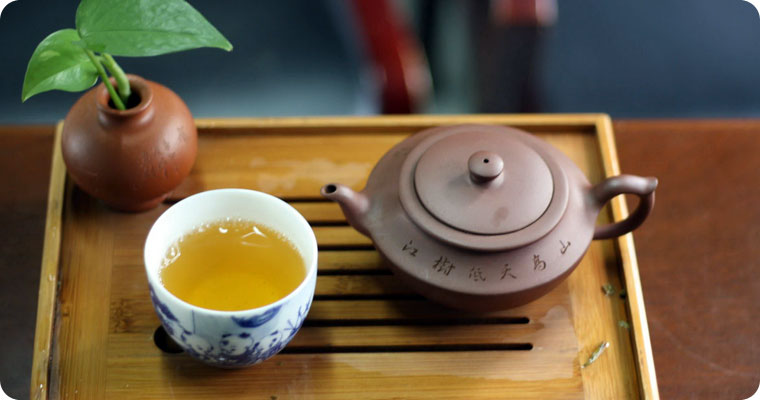|
- Home
- Teas Wonderful History
Tea's Wonderful History
Tea is among the world’s oldest and most revered beverages. It is today’s most popular beverage in the world, next to water. Tea drinking has long been an important aspect of Chinese culture. A Chinese saying identifies the seven basic daily necessities as fuel, rice, oil, salt, soy sauce, vinegar, and tea. According to Chinese legend, tea was invented accidentally by the Chinese Emperor Shen Nong in 2737 B.C. Emperor Shen Nong was a scholar and herbalist, as well as a creative scientist and patron of the arts. Among other things, the emperor believed that drinking boiled water contributed to good health. By his decree, his subjects and servants had to boil their water before drinking it as a hygiene precaution. On one summer day while he was visiting a distant region, he and his entourage stopped to rest. The servants began to boil water for the skilled ruler and his subjects to drink. Dried leaves from a nearby camellia bush fell into the boiling water. The emperor was interested in the new liquid because it had a pleasing aroma, so he drank the infusion and discovered that it was very refreshing and had a delightful flavor. He declared that tea gives vigor to the body; thus that was when tea was invented, but it was considered as a medicinal beverage. It was around 300 A.D., when tea became a daily drink.
It was not until the Tang and Song Dynasties when tea showed some significance in Chinese tradition. During the mid-Tang Dynasty (780 A.D.), a scholar named Lu Yu published the first definitive book, Cha Ching or The Tea Classic, on tea after he spent over twenty years studying the subject. This documentation included his knowledge of planting, processing, tasting, and brewing tea. His research helped to elevate tea drinking to a high status throughout China. This was when the art of tea drinking was born.
Later, a Song Dynasty emperor helped the spread of tea consumption further by indulging in this wonderful custom. He enjoyed tea drinking so much, that he bestowed tea as gifts only to those who were worthy. During this same time, tea was the inspiration of many books, poems, songs, and paintings. This not only popularized tea, it also elevated tea’s value which drew tea-growers to the capital.
Between the Yuan and Qing Dynasties, the technology of tea production continuously advanced to become more simplified and to improve the methods of enhancing tea flavor. During this period, tea houses and other tea-drinking establishments were opening up all over China. By 900 A.D., tea drinking spread from China to Japan where the Japanese Tea Ceremony or Chanoyu, was created. In Japan, tea was elevated to an art form which requires years of dedicated studying. Unlike the Japanese people, the Chinese people tend to view tea drinking as a form of enjoyment: to have after a meal or to serve when guests visit.
Tea was introduced to Europe in the 1600s; it was introduced to England in 1669. At that time, the drink was enjoyed only by the aristocracy because a pound of tea cost an average British laborer the equivalent of nine months in wages. The British began to import tea in larger quantities to satisfy the rapidly expanding market. Tea became Britain’s most important item of trade from China. All classes were able to drink tea as the tea trade increased and became less of a luxury. Now, tea is low in price and readily available.

The word “tea” was derived from ancient Chinese dialects. Such words as “Tchai”, “Cha”, and “Tay” were used to describe the tea leaf as well as the beverage. The tea plant’s scientific name is Camellia sinensis (which is from the The aceae family of the Theales order), and it is indigenous to China and parts of India. The tea plant is an evergreen shrub that develops fragrant white, five-petaled flowers, and it is related to the magnolia. Tea is made from young leaves and leaf buds from the tea tree. Two main varieties are cultivated: C. sinensis sinensis, a Chinese plant with small leaves, and C. sinensis assamica, an Indian plant with large leaves. Hybrids of these two varieties are also cultivated. What we call “herbal tea” is technically not tea because it does not come from the tea plant but consists of a mixture of flowers, fruit, herbs or spices from other plants.
Today, there are more than 1,500 types of teas to choose from because over 25 countries cultivate tea as a plantation crop. China is one of the main producers of tea, and tea remains China’s national drink.
By L. K. Yee
 References
References
- All The Tea In China, by Kit Chow and Ione Kramer
- Britannica Online: “Tea,” by Encyclopedia Britannica, Inc.: http://www.britannica.com/topic/tea-beverage
- “The History of Tea,” compiled by UK Tea & Infusions Association: http://www.tea.co.uk/history-of-tea
The listing of the sites above does not constitute an endorsement of these sites by CHCP.


